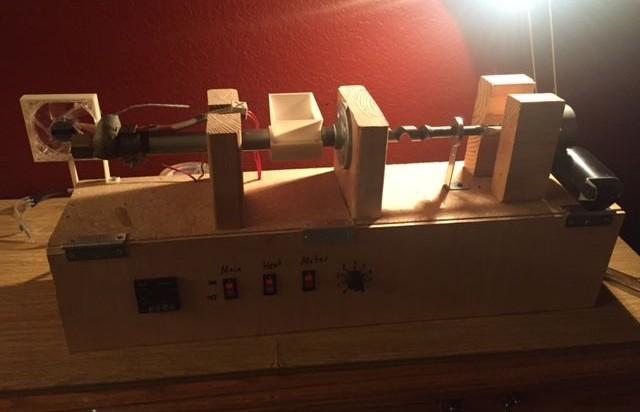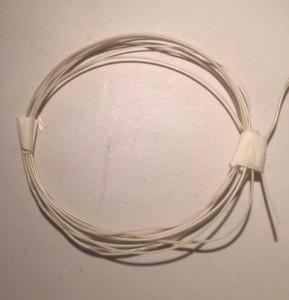All successful emergent technologies follow a rather predictable path to mainstream adoption, and 3D printing is no different. They all start as a small, niche market and slowly expand thanks to their loyal early adopters. As more people buy in to the technology, manufacturers get better at producing the technology, prices drop, and the market expands even further. And now that the 3D printing industry is becoming more popular, 3D printers are beginning to fall rapidly in price. Partially thanks to a quickly growing community of makers and artists, but also to a school system eager to use it to teach essential STEM education.
But interestingly, while the rapid market expansion has made 3D printing more affordable than ever, there hasn’t really been a significant drop in materials cost. There are dozens of companies producing 3D printed filament now, but even the affordable options are still in the same cost range as they were five years ago. I suspect that is due to filament being essentially a hidden cost that many consumers purchasing their first printer are aware of. As everyone marvels at suddenly affordable desktop 3D printers, they don’t seem to notice that it still costs between $30 to $50 for a few pounds of plastic. But in the last few months I’ve noticed a lot of makers tired of high filament costs who have opted to take matters into their own hands by making the filament themselves.
The latest example is the Homemade DIY 3D Printer Filament Extruder tutorial that was just uploaded to Instructables. The tutorial was created by user Cpriolo14, who built the simple device for less than $200 with easy to acquire parts and a few tools that any maker is bound to have in their workshop. The Instructable shows users how to make their own 1.75 mm filament using raw plastic pellets that can be purchased for a fraction of what spooled filament costs.
It turns out that making 3D printing filament isn’t an especially difficult process. The raw pellets are melted down and a rotating auger pushes the liquid plastic through an extruder that turns it into filament. If the temperature settings are correct, the newly formed strands of filament will be solidified within seconds, and ready to be spooled. Until recently the only way to make filament was to have access to large, industrial machinery, but new desktop filament extruders are starting to pop up on the market, and especially on crowdfunding websites like Kickstarter. But after spending more than $1000 on a 3D printer, already it can be a pretty hard sell to convince someone to buy another piece of equipment for almost the same price.
Realistically, most 3D printer owners are not going to be capable or willing to make their own extruders, even with easy to use Instructables like Cpriolo14’s. However the maker community isn’t your typical group of consumers, and based on the amount of similar projects popping up online, many of them are clearly eager for a new project. And more and more low cost desktop filament extruders are going to be developed and sold, which will hopefully push 3D printing filament manufacturers to start dropping prices to compete.
Less expensive filament needs to be an eventuality if 3D printing is going to continue to gain mainstream adoption. And it seems that as with desktop 3D printers themselves, the community of makers is going to have to be what drives those price drops. What do you think about the price of 3D printer materials? Would you build your own filament extruder to help curb those costs? Let us know on our DIY 3D Printer Filament Extruder forum at 3DPB.com.
Subscribe to Our Email Newsletter
Stay up-to-date on all the latest news from the 3D printing industry and receive information and offers from third party vendors.
Print Services
Upload your 3D Models and get them printed quickly and efficiently.
You May Also Like
3D Printing News Briefs, June 11, 2025: Sustainability, Automotive Tooling, & More
We’re starting with sustainability news in today’s 3D Printing News Briefs, as EOS has strengthened its commitment on climate responsibility, and Zestep is making 3D printing filament out of eyewear...
3D Printing 50 Polymer Stand-In Parts for Tokamaks at the PPPL & Elytt Energy
Of all the world’s things, a tokamak is one of the hardest, most complex, expensive and exacting ones to make. These fusion energy devices make plasma, and use magnets to...
3D Printing News Briefs, May 17, 2025: Color-Changing Materials, Humanoid Robot, & More
We’re covering research innovations in today’s 3D Printing News Briefs! First, Penn Engineering developed 3D printed materials that change color under stress, and UC Berkeley researchers created an open source,...
Firehawk Aerospace Partners with JuggerBot 3D, Gets $1.25M from AFWERX for 3D Printed Propellants
Texas-based Firehawk Aerospace, an advanced energetic materials firm that works with aerospace and defense applications, announced a strategic partnership with JuggerBot 3D, an Ohio-based large-format 3D printer manufacturer. Together, the...



































